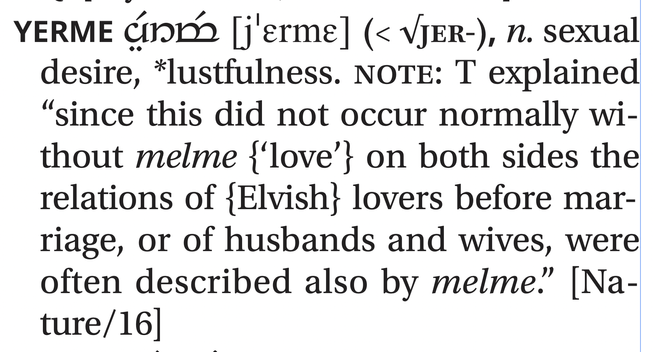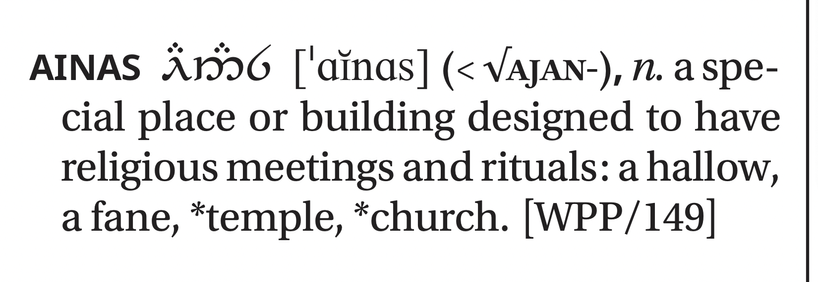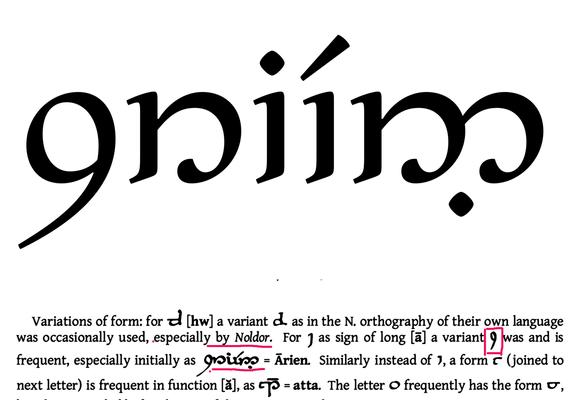C'est pour les Français. Le château de l'Anglard se trouve dans le village de Mazerier (Allier). Il est classé.
Il y a des chambres d'hôtes.
#Tengwar
The sa-rince (= + s) used with the Tengwar leaves open the door for typographical interpretation(s).
This is a very short quote from a very long text by Tolkien. He explained how his Tengwar were used for the Old Noldorin (ON) language. You never heard of it? This language does not exist anymore in the last Phase of Tolkien's writings (circa 1949-1973). There is no Old Noldorin in "The lord of the Rings" or "The Silmarillion".
About 1949, Old Noldorin was 'transformed' into his new Old Sindarin language and most of these rules became irrelevant. 🤷♂️
@e_kloczko
Do you know if Tolkien preferred a fountain pen for most inked notes, or whether he used a dip pen or feather quill much?
I am also quite interested in the nib style of his preference! I would assume it is a flat or italic nib, for the beautiful character of the letters!
Thanks!
Because the Tengwar are complicated, Tolkien often made mistakes. One of the most difficult rule to understand of the Tengwar is their flexibility.
In Tengwar script the dot can be used for e or i and the accent can be used for e or i.
Tolkien wrote the "Namárie" poem (sung by Galadriel) in the ára-tencele mode. He made a mistake. He used an accent instead of a dot and he wrote "lasse" instead of "lassi".
_Ai! laurie lantar lassi súrinen._
Because Life is complicated, Tolkien loved only complicated things.
Many readers find that the story of the "Hobbit" or the "Lord of the Rings" are simple or straightforward would be surprised to discover that they are far from the truth.
One of the most difficult rule to understand of the Tengwar is their flexibility.
The consonant diacritics (3 dots = a; accent = i) can be read as being before or after the consonant depending on the mode used.
I reworked the glyph for 11 in duodecimal trying to make it looking less like a Tengwa (letter) and more like a 'number' (abstract).
Comments welcome. I am still learning! 🤓
Quenya "laune".
The word is written in Alcarin Tengwar in the ára-tencele mode.
The underlined sentence was written by Tolkien. LQ3 = is the Quenya language from c.1930 to 1949.
Not the same in grammar in "The Lord of the Rings" and "The Silmarillion". That language is marked TQ for Tarquesta.
I spent a few hours on the Elvish Zero.
I am rather happy with it as it is now.
My work on the typography of the Tengwar.
Not only did Tolkien imagine the Elvish letters, punctuation, and various symbols, abbreviations, but also all the numbers and even more, since he decided that the Elves (and Dwarves) used also the duodecimal system.
In the center, the number 12 (10) in duodecimal. And below, Tolkien's text explaining it.
This is my first attempt; I'm not entirely satisfied.
The content of App. E of LOTR is condensed. All tengwar have a "full name" in Quenya. Tolkien wrote:
"Each ‘full name’ was an actual word in Quenya that contained the letter in question. Where possible it was the first sound of the word; but where the sound or the combination expressed did not occur initially it followed immediately after an initial vowel."
So where is the tengwa anna in the full name anna? Nowhere! It should have been written by Tolkien: ’anna or ȝanna.
The Plan:
In order to learn to design tengwar I am using Toshi's work.
Red are the tengwar I designed this month in the style of Alcarin Tengwar by Toshi Omagari.
Blue tengwa, I reassigned it.
After mastering the design of the Tengwar and doing the 15 or about Open Type Fonts for each mode Tolkien imagined, I will finish designing my Tengwar Sans Serif, then open a site dedicated to the Tengwar, and then do the "Middle-earth Dingbats Fonts".


















